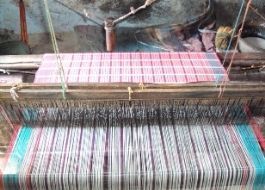
A traditional occupation for lakhs of artisans in the North-east, the handloom sector has not yet been able to fulfil its immense potential. As per official figures, the northeastern States have the highest concentration of handloom weavers in the country, accounting for some 88 per cent of the women weavers. Similarly, the region also accounts for around 66 per cent of the country’s total looms, and over 50 per cent of the total number of weavers. Notwithstanding the predominance of this traditional occupation, the handloom industry by and large remains an unorganized sector. This has effectively distanced the artisans from institutional support for raw materials, finance, training and marketing. All this has resulted in the weavers not getting due remuneration for their toil. This is despite the Centre releasing substantial sums for the uplift of the sector. Apparently, the implementation of the projects has been tardy and has fallen short of benefitting the weavers. Uncalled-for bureaucratic red-tapeism also often hinders proper implementation of such initiatives. A number of textile projects such as National Handloom Development Programme, Comprehensive Handloom Cluster Development Scheme, Handloom Weavers’ Comprehensive Welfare Scheme and Yarn Supply Scheme and North Eastern Region Textiles Promotion Scheme are currently under implementation in the region. An assessment of these interventions needs to be done for ascertaining the benefits to the intended weavers. Such a step would also help find out the anomalies and their rectification. Among other things, technological assistance and market exploration for handloom products warrant urgent government intervention. Despite the huge manpower engaged in the industry, most of the looms cater only to domestic consumption. This needs to change. Value addition through technological intervention should be a crucial component of the overall strategy to put the handloom sector on the fast-track growth path. This will also help capture markets abroad. The success of the traditional handloom and handicrafts industry of South Asia can be attributed to a large extent the productive fusion of the traditional with the contemporary. Evolving a pragmatic marketing strategy apart, there is also a need for documenting the traditional handloom motifs and insignia of the region for exploring the prospects of acquiring GI tags for various products and preventing cheap imitation by unscrupulous traders from outside.

